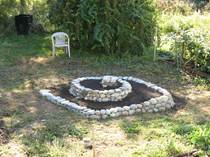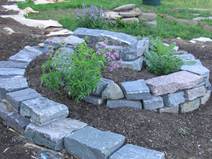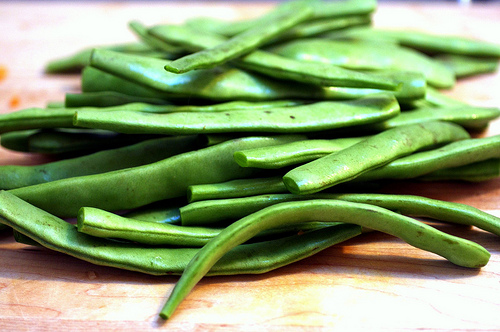Turn on the oven - 400F.
Go to the garden and look for cherry tomatoes.
Take lots of said cherry tomatoes and cut them in half and dump them into a glass or pyrex baking dish, a big one, so that they are in a single layer.
Add some finely chopped cipollini onion. Or red onion, or sweet onion, or any kind of onion really.
Add a few or more tablespoons of olive oil. A good one. Don't skimp here, you want everything well coated, slippy-slide like.
Grab some herbs like savory, rosemary, oregano, sage, (and/or) thyme and chop them up finely or coarsely, depending on the look you want and your tolerance for stems in food.
Add plenty of good sea salt.
Toss together and slide pan into a pre-heated 400F oven. Forget about it for a good 45 minutes. Check and stir / flip once, about half way through. It will start to get caramelized and yummy. You can do this ahead of time and just let it sit in the turned-off oven for a while. Gets better with time, promise.
Meanwhile, do the second flavor layer......
Heat up a generous amount of olive oil in a heavy saute pan (1/2 cup or so). I used cast iron and it was lovely.
Chop up some sweet onion, red pepper, hot pepper. (If you need quantities, try 1 medium onion, 1 large red pepper or 2 small, 1 jalapeno or cherry bomb or 2 thai hot peppers, or more to taste. No rules here.)
Add onion and peppers to hot olive oil, and let it fry for a while. Stir every now and then. These will sizzle gently for about 10 minutes. They will soften, get fragrant, etc.
Chop up about 6 cloves of garlic.
Chop up about 4 tablespoons of herbs - a combo of oregano, sage, rosemary, thyme is nice. But really, any woody, fragrant herb will do here.
Find some paprika. My favorite is Pimenton (the smokey kind) but if you don't have that, you can use sweet or hot (if you can take the heat.) If you don't have any paprika at all, just skip it; the dish will be good without it.
Add garlic, paprika, herbs, and about 1/2 tsp salt to olive oil and peppers in the pan. Stir, and turn down the heat. This will simmer together another five minutes or so over low heat. More time is fine. But 5 minutes is the minimum. Again, expect fragrance here.
You can get the pasta water going at this point. You know...big pot, lots of water, salt.
Once pasta water is boiling, add the pasta. However much you need and while it cooks finish off the sauce.
Here is how:
Squeeze a lemon. Turn sauce # 2 off ( the one on the stove, not the one in the oven) and take it away from the heat. Add the lemon juice. It may sizzle a bit, so stand back. Stir together. Add some chopped parsley or basil (one or the other, not both, please).
Take roasted cherry tomatoes out of oven. Add the sauteed peppers and herbs to the tomatoes, scraping up every savory bit. gently and lovingly merge the two sauces. Serve in a bowl with a nice small ladle.
This is a rich, olive oil intense sauce. Use sparingly over the pasta with lots of freshly ground black pepper. The flavors add up to more than the sum of the parts. Really.
Some possible additions, if you must:
- anchovies ( with the peppers and onions on the stove)
- olives (pitted and chopped, added at the end with the lemon juice)
- capers (can be added at the beginning or at the end. Gives you two different flavors either way, experiment with which you like best).
- scallions (toward the end of the cooking time in either of the two sauces)
- freshly grated parmesan (to pass around at the table)
But really, the beauty of this sauce duo is the simplicity. Don't overdo the flavors right off the bat. Try it as is. Just swoony and simple.










